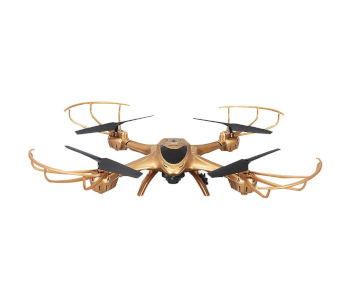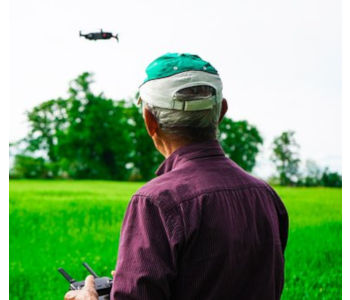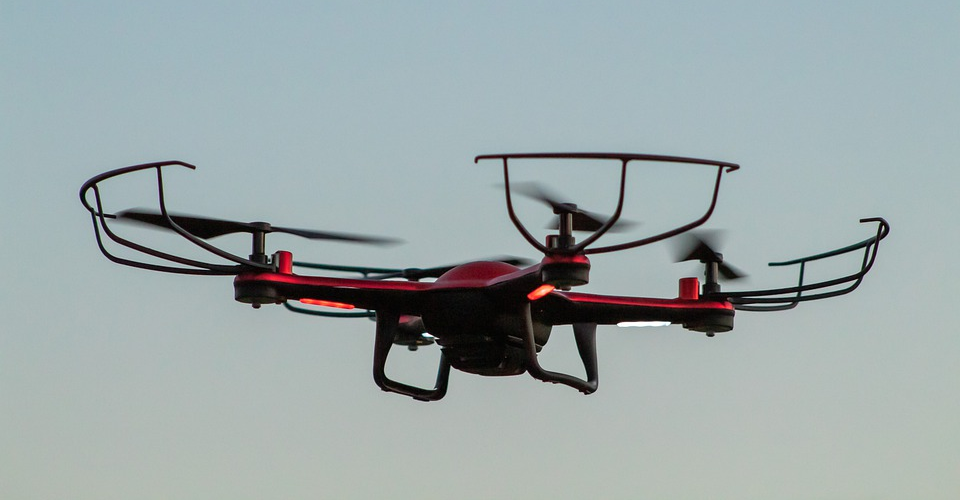Drone Altitude Hold – How It Works and Potential Issues
A factor that has contributed to the rapid adoption of drone technology among the mainstream market is the fact that they have become so much easier to use. With all the user-friendly features that drones have nowadays, even a beginner can have a drone up and flying in just a few minutes.
One of the most common of these features is Altitude Hold. This automatically maintains the altitude of your drone so you can focus on thrusting it towards any direction. How exactly does a drone achieve this feat? Does it work perfectly or are there any potential issues you can expect when flying with Altitude Hold?
What is Altitude Hold and how does it work?
The propellers of a drone serve two main objectives – keeping the drone airborne by generating lift and allowing it to move in any direction via propulsion. Of these two, the former has to be done continuously, lest the drone plummets towards the ground.
While the drone pilot can control the altitude of the drone by decreasing or increasing the speed at which the propellers spin, manually maintaining a constant altitude is next to impossible. This is because changing weather conditions, such as air pressure and humidity, also influence the amount of lift that the propellers generate. Maintaining a constant altitude manually is also made difficult by the fact that the drone pilot also has to focus on moving the drone in any direction and making turns.
As its name implies, the Altitude Hold feature allows a drone to automatically maintain an altitude. This means that, barring input from the pilot, the drone will hover at the same altitude regardless of external factors. This frees up the pilot to focus on more important matters, such as directing the direction at which the drone will fly or framing photos or videos.
At the heart of the Altitude Hold function is a very simple piece of technology – a barometer. This device continuously measures and records the value of air pressure at the drone’s current altitude. Since air pressure decreases proportionally with altitude, the barometer can be used as an indirect altimeter for the drone. The use of a barometer to measure altitude isn’t done for simplicity’s sake – it’s the same technology used in manned aircraft.
For the altitude to air pressure relationship to work, a barometer needs a baseline value. This value is obtained by calibrating the barometer at sea level, thus recording the air pressure value at zero MSL. This isn’t always a constant value because of changing weather conditions, prompting the need for a barometer to be calibrated periodically.
Which drones have Altitude Hold?

Barometers provide a simple and cheap technology that allows drones to measure their current altitude and maintain a stable hover. The best thing about this technology is that it’s so cheap that even toy drones that cost less than $50 have it.
Right now, it’s no longer surprising to find cheap drones like the MJX Quadcopter and the Syma X8HG have Altitude Hold functions. In a way, an Altitude Hold feature is a great selling point for drones that are marketed towards children and beginners. Nobody wants to constantly wrangle with a drone that drifts up or down – it’s not fun, and it could turn off people who are just trying to learn to fly a drone.
If you have a mid-range to high-end drone from any of the popular drone brands like DJI, Autel, Parrot, or Yuneec, then it’s pretty safe to assume that your drone has Altitude Hold. Right now, Altitude Hold is one of a few features that are considered to be standard in all but the most inexpensive models.
Potential problems of the Altitude Hold feature
Despite the lack of need for any pilot intervention for the Altitude Hold function to work, it is still not a foolproof technology. The dependence of Altitude Hold on air pressure readings is its biggest weakness. Air pressure can be influenced by a lot of factors related to weather, all of which are difficult to predict and out of the drone pilot’s control.
A sudden drop in temperature because of incoming rain will result in a corresponding drop in pressure, which the drone may incorrectly interpret as a sudden gain in altitude. However, pressure drop due to a temperature change isn’t usually significant enough to cause the drone to adjust its altitude by a huge margin.
The biggest problem happens when a strong wind blows while the drone is hovering with Altitude Hold. The sudden gust of wind creates a sudden spike in the barometer’s pressure reading. The drone will then interpret this as a sudden altitude drop. In some cases, the extreme air pressure increase can even result in altitude readings that are below the altitude at launch – negative readings, so to speak.
The Altitude Hold function will then prompt the drone to adjust as a reaction to the interpreted altitude drop. In most cases, this will result in the drone immediately shooting up, which can be particularly problematic if you’re flying under a tree or a canopy.
This is a pretty extreme example, but here are just some of the issues you could be facing when flying with the unfavorable combination of Altitude Hold and windy conditions.
Altitude drifting
When it’s extremely windy, your drone’s barometer will likely measure fluctuating air pressure values. This means that it’s going to struggle to maintain its original altitude, resulting in a rocky flight experience where the drone may find itself oscillating between gaining and reducing altitude.
This is bad news if you’re trying to do some professional work, as you’re not likely to collect any useful data, photos, or videos from a drone that is constantly moving. This is also very stressful for the drone’s motors and battery.
Unresponsive controls

When you find your drone moving up and down uncontrollably, the natural tendency is to try and wrangle it into stability. However, this is so much easier said than done. This is merely a consequence of the constantly drifting altitude values of the drone’s barometer. Even if you’re trying to throttle the drone down to land manually, the drone may be non-responsive because it already believes that it’s losing altitude. In these circumstances, you might not have a choice but to wait for the winds to die down so that the drone can get a stable altitude reading.
Unresponsive auto-land
Since manually landing your drone will be difficult, you might be tempted to activate its auto-land function. This is even less likely to work, as the drone relies heavily on its altitude reading to stick an automatic landing. This is especially true if the drone experiences a gust of wind so strong that it records a negative altitude – you might even see it flying up in an attempt to land!
Again, your best bet would be to wait for the drone to get a stable altitude reading before attempting to do land it. It would be best to do this manually.
Knowing these issues, some drone brands have improved their model’s Altitude Hold functions through the use of advanced GPS positioning and ultrasonic sensors. These give a bit of redundancy to the methods that a drone can use to maintain a stable altitude, although they still have limitations. GPS reception isn’t assured in all areas, and ultrasonic sensors only work at a limited altitude away from the ground.
In any case, the Altitude Hold feature isn’t a guarantee that your drone operations will always go smoothly. Flying in poor weather is always a bad idea and one that even the most sophisticated onboard sensors and flight systems cannot compensate for. If it gets incredibly windy, your best option would still be to ground your drone until the weather improves.
Final thoughts
The Altitude Hold is one of the many features that have made drones the user-friendly devices that they are now. The technology behind it is very simple – it has been used by the aviation industry for decades. It’s also so inexpensive that even toy drones can afford to have Altitude Hold.
What drone pilots need to know is that the technology isn’t perfect. It’s not going to save you if you decide to fly your drone under very inhospitable conditions. As always, even the most sophisticated safety features are no replacement for your good judgment.

